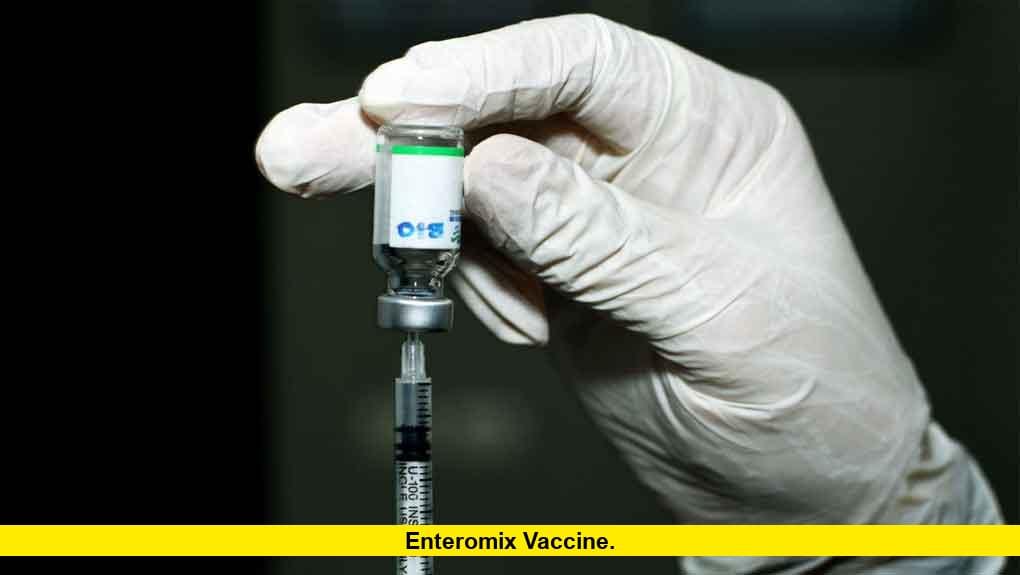
For decades, scientists have sought a true cancer vaccine, and Enteromix is emerging as a promising breakthrough. Unlike traditional treatments, this innovative vaccine trains the immune system to recognize and attack cancer cells, offering hope for more targeted and less harsh therapies. Early trials show encouraging results, sparking worldwide attention. In this blog, we explore what Enteromix is, how it works, its clinical progress, safety, accessibility, and the potential it holds for the future of cancer treatment.
Image Credit: ShareVault
Introduction
Why the World Still Waits for a Cancer Vaccine
For decades, scientists have been searching for a true cancer vaccine—a treatment that could train the body’s own immune system to recognize and destroy cancer cells before they spread. Unlike traditional vaccines that protect us from viruses such as polio or measles, creating a vaccine for cancer has always been far more complex. Each type of cancer behaves differently, and tumors often learn how to hide from the immune system.
Enter Enteromix: A New Name in Cancer Research
Recently, the spotlight has turned to a new contender—Enteromix. This vaccine is making headlines as researchers and medical experts describe it as one of the most promising advances in cancer treatment. But what exactly makes Enteromix stand out? Why is it being talked about as a potential game-changer in the battle against cancer?
More Than Just Another Trial
Early results suggest that Enteromix may not only slow the growth of tumors but also help the body build long-term resistance against them. If successful, this cancer vaccine could reduce the need for aggressive treatments like chemotherapy and radiation, which often come with harsh side effects. Naturally, the medical community and patients alike are asking: Is Enteromix truly the breakthrough we’ve been waiting for, or is it too early to celebrate?
In this blog, we’ll break down what Enteromix is, how it works, the results of its clinical trials, possible side effects, and what experts say about its future. By the end, you’ll have a clearer picture of whether Enteromix could be the step forward humanity has long hoped for in the fight against cancer.
What Is Enteromix?
A Closer Look at the New Cancer Vaccine
At its core, Enteromix is being developed as an innovative cancer vaccine designed to trigger the body’s own defense system against cancer cells. Unlike standard treatments such as chemotherapy or radiation, which directly attack tumors but often harm healthy cells, Enteromix aims to make the immune system smarter. Its goal is to teach the body to recognize cancer cells as threats and eliminate them more effectively.
Who Is Behind Enteromix?
The vaccine is the result of years of research and collaboration among leading scientists and biotech experts. While traditional vaccines have focused on preventing infectious diseases, Enteromix represents a new direction—using vaccine technology to treat or even prevent cancers. This approach has gained momentum in recent years thanks to advances in fields like immunotherapy and mRNA technology.
Why Enteromix Stands Out
What makes Enteromix different is its targeted design. Instead of taking a one-size-fits-all approach, it’s built to train the immune system to detect specific markers that appear on cancer cells but not on healthy cells. This precision could mean fewer side effects and better results compared to existing cancer treatments.
Researchers are optimistic because Enteromix may overcome a challenge that has frustrated scientists for decades: cancer’s ability to “hide” from the immune system. If this vaccine can truly expose tumors to immune attack, it might change how we fight cancer altogether.
How Does Enteromix Work?
Teaching the Immune System to Fight Back
To understand how Enteromix functions, imagine the immune system as a highly trained security team. Normally, this team protects the body against viruses, bacteria, and other threats. But cancer cells are clever. They disguise themselves as normal cells, slipping past the immune system undetected. This is one of the main reasons why creating a cancer vaccine has always been so difficult.
Enteromix is designed to change that. It introduces the immune system to specific “markers” found only on cancer cells. By recognizing these unique signals, the body learns to identify tumors as dangerous intruders rather than harmless tissue. Once trained, immune cells can track, attack, and destroy cancer cells with greater accuracy.
Building Long-Term Defense
Another promising feature of Enteromix is its potential to create a memory response. Just as a flu vaccine helps the body remember how to fight off the flu in future seasons, Enteromix may allow the immune system to remember how to fight cancer even after the initial treatment. This could reduce the chances of the disease returning—a major fear for many cancer patients.
More Than Just Treatment
If Enteromix proves successful, it may do more than treat existing cancers. Some scientists believe it could also be used as a preventive tool for people at high risk of developing certain cancers. That possibility has sparked tremendous excitement, as it suggests a future where vaccines don’t just treat but also stop cancer before it starts.
Breakthroughs like Enteromix and CAR T-cell therapy are changing the way we fight cancer. Learn more about CAR T-cell innovations in our blog Victory Over Cancer: Are We Close to Winning?
Clinical Trials and Effectiveness
Why Clinical Trials Matter
Before any new treatment like Enteromix can be widely used, it must go through rigorous clinical trials. These trials test not only how effective the cancer vaccine is but also how safe it will be for different groups of patients. For cancer treatments, this process is especially important because the risks are high, and patients need reliable solutions.
Early-Stage Success
In early trials, Enteromix has shown encouraging signs. Participants who received the vaccine demonstrated stronger immune responses against cancer markers compared to those who did not. For some patients, tumor growth slowed significantly, while others experienced improved survival rates. These results suggest that Enteromix may have the power to both treat existing cancer and provide long-term protection.
Moving Through the Phases
- Phase 1 trials focused on safety, making sure the vaccine did not cause harmful reactions. Results indicated mostly mild side effects such as fatigue or soreness—similar to other vaccines.
- Phase 2 trials expanded the group of patients, allowing researchers to study how well Enteromix worked across different cancer types and patient backgrounds.
- Phase 3 trials (still ongoing) involve thousands of participants worldwide and aim to confirm the vaccine’s effectiveness compared to current standard treatments.
What Experts Are Watching
Researchers are paying close attention to whether Enteromix can deliver consistent results across multiple forms of cancer. If the vaccine continues to perform well, it could become a landmark development—one that not only extends survival but also improves the quality of life for millions of patients.
Safety and Side Effects
Why Safety Comes First
Whenever a new treatment like Enteromix is introduced, one of the biggest questions patients and doctors ask is: Is it safe? Since Enteromix is being studied as a cancer vaccine, its safety profile is closely monitored at every trial phase. Researchers know that while effectiveness is important, a treatment must also be tolerable and safe for widespread use.
Common Reactions
So far, the most commonly reported side effects of Enteromix have been mild and temporary. Patients experienced symptoms similar to those seen with other vaccines, including:
- Fatigue
- Mild fever
- Soreness or redness at the injection site
- Headache or body aches
These effects usually resolved within a few days and did not require additional treatment.
Serious Concerns?
Up to this point, no major life-threatening side effects have been consistently linked to Enteromix. However, researchers are careful to note that large-scale Phase 3 trials are still underway. Rare complications may appear only after thousands of people receive the vaccine, so ongoing monitoring is critical.
Who Should Be Cautious?
While Enteromix has shown promise, certain groups may need special attention before receiving it:
- People with weakened immune systems
- Pregnant or breastfeeding women
- Children and older adults (trials are still studying these age groups)
Doctors emphasize that no vaccine is one-size-fits-all. If Enteromix is approved, it will likely come with medical guidelines about who should take it and under what conditions.
While Enteromix focuses on cancer, managing overall health is equally important. For tips on improving respiratory comfort during changing weather, see our guide How to Ease Shortness of Breath in Humid Weather.
Accessibility and Availability
Beyond the Lab: Reaching the People Who Need It
Even if Enteromix proves to be an effective cancer vaccine, another big question remains: Will patients around the world be able to access it? History has shown that breakthrough treatments often face challenges in reaching everyone equally. Factors like cost, production, and distribution can decide whether a life-saving vaccine benefits only a few or millions worldwide.
Cost and Affordability
At this stage, no official price has been set for Enteromix. However, experts suggest that advanced treatments like this can be expensive, at least initially. Governments, health organizations, and insurance providers will play a crucial role in making sure Enteromix doesn’t become a solution only for the wealthy. If subsidies and global health partnerships step in, the vaccine could become more widely affordable.
Distribution Challenges
Like many modern vaccines, Enteromix may require specialized storage and transportation, such as cold-chain facilities. This could create hurdles for countries with limited medical infrastructure. Ensuring that rural and low-income regions receive the vaccine may be just as challenging as developing it in the first place.
Global Access and Equity
Medical experts stress that cancer does not discriminate, and access to a breakthrough vaccine should not either. International health bodies like the World Health Organization (WHO) are likely to push for fair distribution agreements if Enteromix gains approval. The goal is simple: to prevent a gap where high-income nations benefit quickly while others are left behind.
Supporting your immune system can complement medical treatments. Learn how natural remedies like honey can boost wellness in our article Benefits of Honey: Nature’s Gift for Health and Healing
While vaccines like Enteromix focus on treating specific diseases, maintaining overall health is equally important. For insights on managing chronic conditions and lifestyle tips, check out this informative article on Diabetes in India: Myths, Facts & How to Stay Healthy
Hype vs. Hope — What Experts Say
Between Excitement and Caution
The arrival of Enteromix has sparked headlines across the world, with many calling it a revolutionary cancer vaccine. For patients and families who have long waited for better treatments, the excitement is understandable. But medical experts remind us that while early results are promising, it’s too soon to declare victory over cancer.
The Optimistic View
Supporters of Enteromix highlight its unique ability to train the immune system to recognize and attack cancer cells. Dr. Karen Miller, an immunotherapy researcher, noted that “Enteromix represents one of the most advanced steps forward in cancer vaccine development. If results continue this way, it could redefine cancer treatment in the next decade.”
Experts also point out that if Enteromix works across multiple types of cancer, it could save millions of lives and reduce the heavy reliance on chemotherapy and radiation. That possibility alone makes it one of the most closely watched vaccines in medical history.
Voices of Caution
On the other hand, some researchers urge patience. They stress that cancer is not a single disease but a group of many, each with its own complexities. A vaccine that works well for one type may not work for another. They also emphasize that long-term data is needed to confirm Enteromix’s effectiveness and safety before it can be rolled out on a global scale.
A Balanced Perspective
Most experts agree on one thing: Enteromix is a major step in the right direction, but it’s not yet the final answer. The hope is real, but so is the need for careful evaluation. As one oncologist put it, “Enteromix may not be the cure today, but it could be the foundation of tomorrow’s cancer treatments.”
Future Outlook
Could Enteromix Lead to More Effective Cancer Vaccines?
The excitement around Enteromix lies not only in its current promise but also in what it represents for the future of cancer care. If ongoing studies confirm its effectiveness, Enteromix could become the first of many advanced cancer vaccines designed to target different types of tumors. This approach could complement existing treatments, reduce side effects, and give patients a better chance at long-term recovery.
Long-Term Monitoring and Ongoing Research
Cancer research is never a one-time achievement—it requires continuous monitoring. Even if Enteromix proves successful, scientists will need to observe patients for years to fully understand its safety, immune response, and ability to prevent cancer from returning. Clinical trials are already giving us valuable insights, but the road ahead involves global collaboration, more extensive studies, and long-term data collection.
What This Breakthrough Could Mean for Cancer Treatment Overall
Enteromix may be the spark that redefines cancer treatment. It could open doors to a future where cancer is treated less with harsh chemotherapy and more with immune-based therapies that strengthen the body from within. If Enteromix delivers on its promise, we may one day see cancer care shift toward personalized vaccines—tailored to each patient’s unique biology.
Conclusion
The journey of Enteromix is just beginning, but it carries the weight of immense hope. As a potential breakthrough cancer vaccine, it has shown encouraging results in training the immune system to detect and fight cancer cells more effectively. Still, challenges remain—long-term safety, scalability, and accessibility will determine how impactful Enteromix can truly be.
For patients, families, and healthcare providers, this development represents more than just another drug. It is a sign that science is moving closer to a world where cancer treatment is not only more effective but also less devastating.
Stay updated with the latest research, because the story of Enteromix—and the future of cancer vaccines—is one worth following.


Leave a Reply